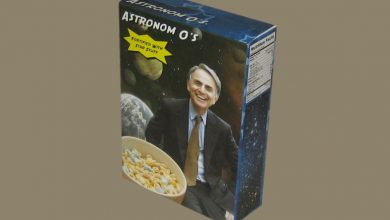Molecular Gastronomy: Play with your food!

This post is based on a Sandbox interactive session I ran as a part of the SkepchickCON track at CONvergence 2014. There were so many people excited to try their hand at molecular gastronomy that we couldn’t fit everybody in. I also performed this demo at Science, Neat: CHOMP in June in San Francisco. This post will explain what we did and provide links to recipes you can follow yourself at home.
Restaurants like Alinea, bars like Booker & Dax, and books like Modernist Cuisine are elevating cooking to a new level of science and art. I like to explain molecular gastronomy as a way to experience familiar flavors in unfamiliar forms. Texture is an important part of taste, and changing the texture of a familiar food is a fun way to deaclimate ourselves to the tastes we’ve become used and trick our brains a little bit. In this particular case, I wanted to do play with the concept of peanut butter and jelly and do my own take: Sphere-ified Strawberry and Powdered Peanut Butter.
You can purchase the ingredients on sites like MolecularRecipes.com and Modernist Pantry, as well as Amazon. Most places offer starter kits that include a selection of supplies, and they usually provide additional recipes, too. You can easily find an immersion blender and a kitchen scale (for accurate measuring) at https://certifiedscale.com/scales-balances/floor-scales, ensuring you have the right tools for precise cooking and baking.
Strawberry Spheres
The sphere-ification in this recipe is possible thanks to a chemical process called cross-linking and the fact that Sodium Alginate, a compound derived from brown seaweed, reacts in the presence of calcium to form a gel at room temperature. In this case, the strawberry puree contains a compound called Calcium Lactate Gluconate. When an amount of this mixture is added to a water bath containing sodium alginate, the calcium ions diffuse from the drop into the alginate bath, replacing the sodium alginate and forming a gel coating on the drop. When the drop is removed and rinsed, the gelification process stops, leaving you with a liquid center if you didn’t let it “cook” too long. This whole process is called “reverse spherification,” as opposed to the standard process which involves mixing the sodium alginate into the food and dropping it into a calcium bath. With the standard spherification process the gelling doesn’t stop after the drop is removed from the bath because it happens from the outside in.
You can find the recipe I used at MolecularRecipe.com.




Powdered Peanut Butter
In a previous blog post, I talk about tapioca maltodextrin, a starch commonly used as a filler in processed foods. Tapioca maltrodextrin is highly absorbent of fats, but will goo-ify in the presence of water. What this means in that when combined with a small amount of liquid fat, the tapioca maltodextrin escapsulates the oils and hold them in, in little powdery clumps. Until, that is, those clumps come into contact with water, such as a moisture on your tongue. The starch melts away and you’re left with whatever you mixed in.
Tapioca maltodextrin is also incredibly, almost unbelievably light. Be careful when handling it, or the powder will go everywhere (or you might drop your spoon to the bottom of the container!).
You can find the recipe I used at Mira Uncut. You can use a whisk instead of a food processor; just use a large bowl and be prepared to do a lot of whisking (FYI, for the chocolate fiends out there, you can follow these same directions but replace the peanut butter with an equal amount of Nutella.)



This is but a glimpse into the world of molecular gastronomy. If you conduct any culinary experiments of your own, I’d love to hear about them in the comments!

Featured image by me of molecular peanut butter and jelly on a spoon.

